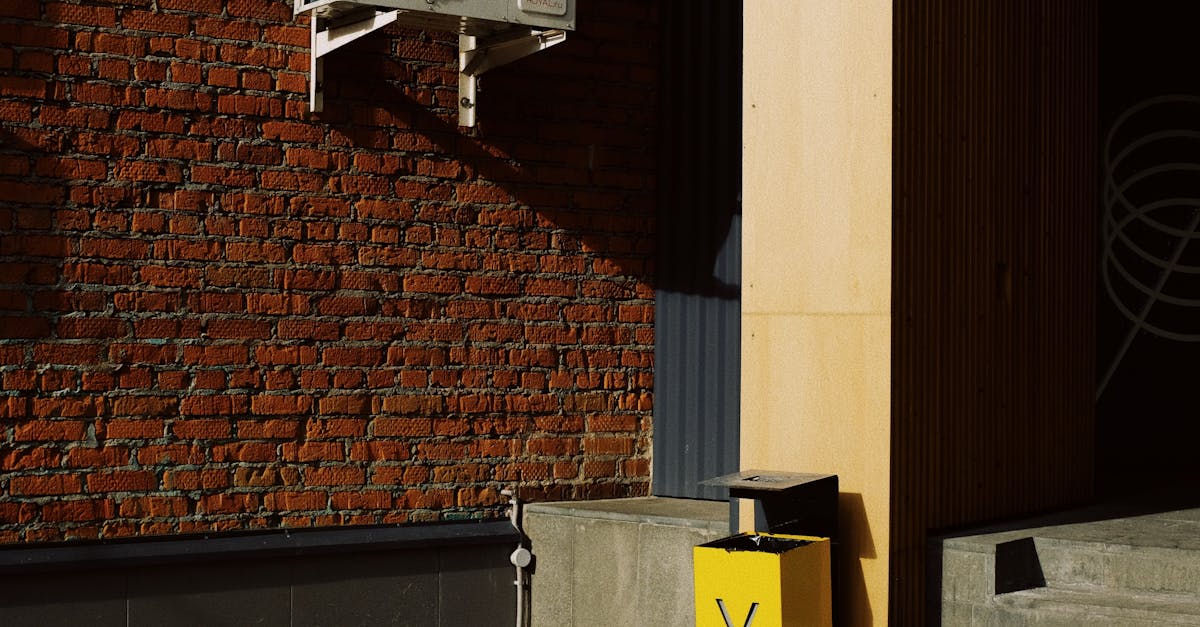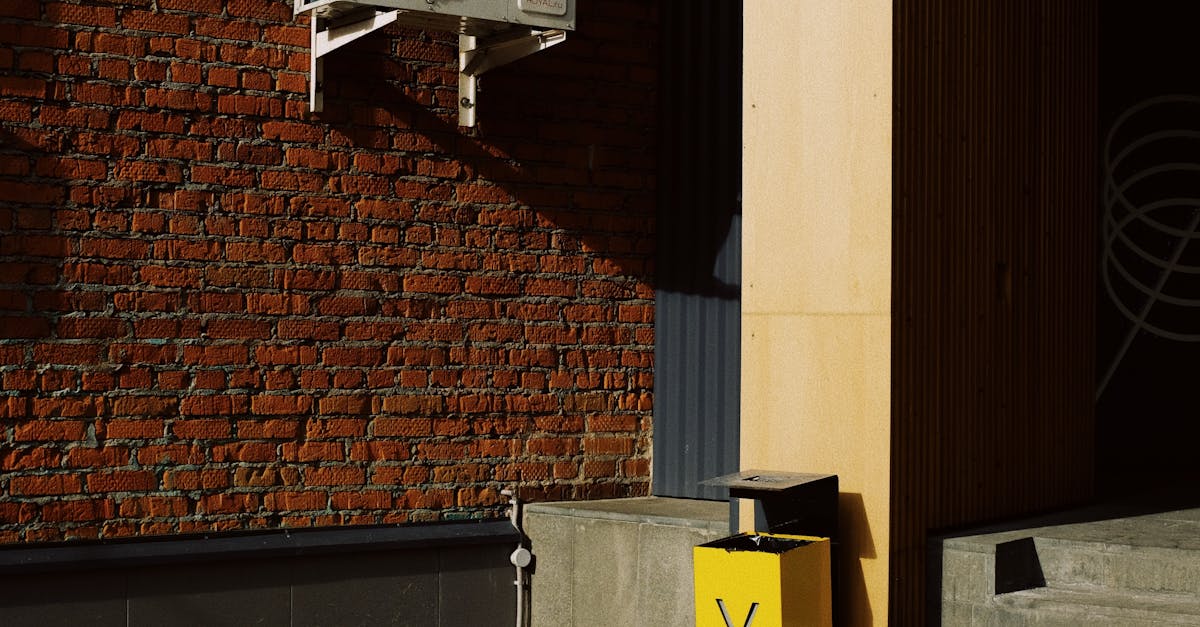
Assessing Ductwork for Leaks
Inspecting the ductwork is a critical step in ensuring your heating system operates efficiently. Over time, ducts can develop leaks due to wear and tear or poor installation. These leaks disrupt airflow, leading to uneven heating and wasted energy. To assess for leaks, visually examine accessible areas of the ductwork for any noticeable gaps or splits. A simple method involves running your hand along the seams of the ducts while the system is on. If you feel any drafts, you likely have a leak that needs addressing.
In addition to visual inspections, using smoke or incense can help identify problem areas. This technique allows you to see where air escapes. Sealing these leaks can significantly improve heating efficiency and reduce energy bills. For comprehensive solutions, consider professional services specializing in Heating System Installation and Repair. They possess the tools and expertise to pinpoint and remedy issues that may not be apparent during a casual inspection.
Improving Efficiency Through Proper Sealing
Sealing ductwork properly can significantly improve the efficiency of your home heating system. Gaps and leaks allow warm air to escape before it reaches its intended areas, leading to increased energy consumption and higher bills. By applying mastic sealant or metal tape to seams and joints, you can create a more airtight system. Conducting a thorough inspection to identify potential leaks, particularly in areas like attics and basements, is essential for optimizing the overall performance of your heating system.
Regular checks and proper sealing techniques enhance the functionality of your system and can extend its lifespan. Tightening connections and sealing any gaps can reduce strain on the equipment, minimizing the need for frequent Heating System Installation and Repair. A well-sealed heating system operates more efficiently, providing consistent warmth throughout your home while using less energy. Taking these steps not only improves comfort but also contributes to significant cost savings over time.
Cleaning the Heat Exchanger
The heat exchanger is a vital component in your heating system that transfers heat generated in the furnace to the air circulating through your home. Over time, it can accumulate dust, debris, and even corrosion, which can hinder performance and lead to safety risks. Regular cleaning of the heat exchanger not only improves efficiency but also prolongs the life of your heating system. A dirty heat exchanger can cause overheating, and in severe cases, it may crack, resulting in dangerous carbon monoxide leaks.
Neglecting this important maintenance task can lead to significant problems down the line. Scheduling a professional service for thorough cleaning ensures that the heat exchanger remains in optimal condition. This step is crucial for maintaining effective temperature regulation and indoor air quality. When considering options for Heating System Installation and Repair, always prioritize a complete health check of the heat exchanger to safeguard both your home and family.
Enhancing Performance and Safety
A clean heat exchanger is vital for both performance and safety in your heating system. It ensures the efficient transfer of heat, preventing unnecessary energy loss and maintaining a comfortable home environment. Dirt and debris can accumulate over time, leading to reduced airflow and potential overheating. Regular cleaning can address these issues, promoting optimal functioning and extending the lifespan of the system.
In addition to cleaning, ensuring proper operation can prevent carbon monoxide leaks, a serious safety hazard. Professionals in heating system installation and repair can identify potential risks that homeowners might overlook. They perform thorough inspections, checking for any wear or damage that could compromise safety. Investing time in these preventive measures leads to a more reliable and safe heating experience.
Scheduling Professional Maintenance
Scheduling professional maintenance for your heating system is essential to ensure it operates efficiently throughout the colder months. Trained technicians are equipped to identify potential issues before they escalate, offering services that keep your system running smoothly. During these maintenance visits, professionals can perform comprehensive checks, clean critical components, and make necessary adjustments to enhance overall performance.
Investing in regular check-ups can extend the lifespan of your heating system while improving its safety and efficiency. Many companies specialize in Heating System Installation and Repair, allowing you to establish a long-term relationship with experts familiar with your specific system. This proactive approach not only helps in maintaining optimal comfort but also reduces the likelihood of unexpected breakdowns.
Benefits of Regular System Checkups
Regular check-ups for your heating system can significantly increase its efficiency and lifespan. A well-maintained system operates more effectively, which can lead to lower energy bills. Seasonal inspections help identify potential issues before they escalate into major problems. Homeowners can avoid unexpected breakdowns during peak cold seasons by staying ahead of maintenance needs.
In addition to improving efficiency, regular maintenance enhances safety within the home. A professional technician can detect carbon monoxide leaks and ensure that the system complies with safety standards. Scheduling periodic reviews is a crucial part of any comprehensive plan that includes heating system installation and repair. This ensures that your investment remains safe and functional over the years.
FAQS
How can I tell if my ductwork has leaks?
You can check for leaks by inspecting the ducts for visible gaps or holes, feeling for air drafts around the seams, or using a smoke pencil to detect airflow. Additionally, a significant increase in your energy bills may indicate duct leaks.
What are some effective methods for sealing ductwork?
Effective methods for sealing ductwork include using mastic sealant, foil tape, or duct tape. Mastic sealant is particularly recommended as it is more durable and provides a better seal compared to duct tape.
How often should I clean my heat exchanger?
It's recommended to have your heat exchanger cleaned annually as part of regular maintenance. This helps ensure optimal performance and can prevent safety hazards associated with buildup and corrosion.
What are the benefits of scheduling professional maintenance for my heating system?
Scheduling professional maintenance can help identify potential issues before they become major problems, improve the efficiency of your system, prolong its lifespan, and ensure it operates safely.
Can I perform maintenance on my heating system myself?
While some maintenance tasks, such as changing air filters, can be done by homeowners, it's best to leave more complex tasks, like cleaning the heat exchanger or inspecting electrical components, to trained professionals to ensure safety and effectiveness.
